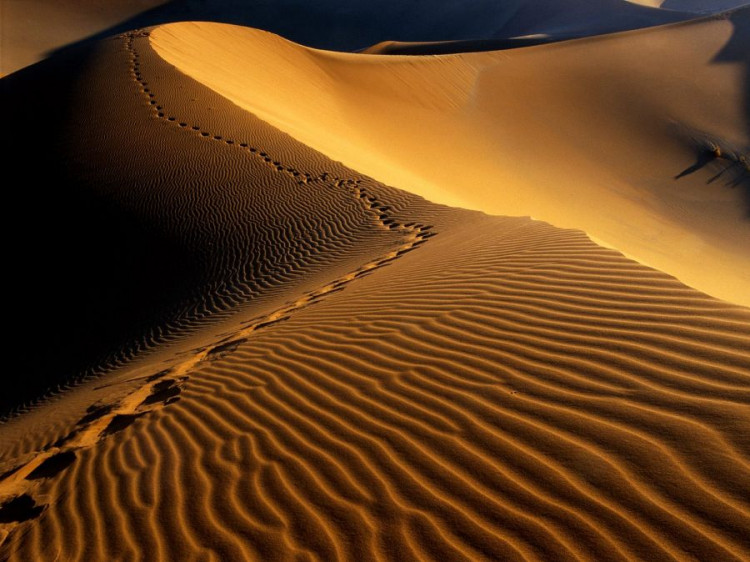Iran, a country of vast landscapes and diverse ecosystems, is home to some of the most awe-inspiring deserts in the world. While many might associate deserts with barrenness and harsh conditions, the deserts of Iran offer a stark contrast—revealing nature’s incredible resilience and the fascinating ability of life to adapt to extreme environments. From the scorching heat of the Dasht-e Kavir to the mesmerizing salt flats of Dasht-e Lut, these deserts are alive with both beauty and biodiversity.
Dasht-e Kavir: The Great Salt Desert
Dasht-e Kavir also plays an essential role in Iranian culture and history. The desert is home to ancient caravanserais, which once provided shelter for travelers on the Silk Road. These historical sites add a sense of mystery and intrigue to the desert, highlighting how human civilizations have long interacted with these rugged landscapes.
Dasht-e Lut: A World of Extreme Heat
Dasht-e Lut, also known as the Lut Desert, is one of the hottest and driest places on Earth. Located in the southeast of Iran, it is famous for its otherworldly landscapes and extreme temperatures. The Lut Desert holds the record for the highest ground temperature ever recorded on Earth, reaching a blistering 159.3°F (70.7°C). Despite these extreme conditions, the desert is a remarkable display of nature’s power and adaptability.
The Lut Desert’s geological features are both unique and mesmerizing. One of the most striking aspects of this desert is the presence of the “Kaluts”—vast, wind-carved formations of sand and clay that look like giant sculptures. These otherworldly shapes create a surreal landscape that is unlike any other in the world. The desert is also home to a range of hardy flora, including acacia and tamarisk trees, which have adapted to the arid environment by developing deep root systems that can access underground water.
In addition to its physical beauty, the Lut Desert is an important ecological area. It serves as a sanctuary for wildlife, including species such as the Iranian desert zebra and the critically endangered Persian cheetah. These animals are specially adapted to the harsh environment of the desert, with the cheetah being one of the most elusive and rare predators in the world.

Biodiversity in the Deserts of Iran
Though Iran’s deserts might seem desolate, they are home to a surprising range of biodiversity. The flora and fauna of these deserts have adapted in unique ways to survive in an environment where rainfall is sparse and temperatures often reach unbearable highs. For example, the Persian gazelle, the sand gazelle, and the desert fox are just a few of the animals that have made the Iranian deserts their home.
These deserts also play a vital role in regulating the local climate, preventing soil erosion, and supporting agricultural activities in nearby regions. Despite the tough conditions, the Iranian deserts are not lifeless but rather resilient ecosystems where life has thrived for thousands of years.
Conservation Efforts and Challenges
Dasht-e Kavir, also known as the Great Salt Desert, is located in the central part of Iran and spans an area of approximately 77,000 square kilometers. The desert is characterized by its salt crusts, barren landscapes, and dramatic sand dunes. Despite its harsh environment, this desert is home to a surprising variety of life. Several species of animals, including rodents, foxes, and reptiles, thrive here, showing how life can adapt to even the driest conditions. In particular, the desert’s flora includes a variety of drought-tolerant plants, such as saltwort and wormwood, which can survive in the saline soil.
Iran’s deserts face increasing threats from human activity, including urban expansion, mining, and water diversion projects. These threats endanger the delicate ecosystems and wildlife that call these deserts home. Conservation efforts are underway to protect these areas and ensure that the deserts continue to remain an integral part of the country’s natural heritage.
In conclusion, the deserts of Iran are not just barren wastelands but rather landscapes of incredible beauty and resilience. They serve as a testament to nature’s ability to adapt and thrive in even the harshest conditions. Whether it’s the salt plains of Dasht-e Kavir or the stunning Kaluts of Dasht-e Lut, these deserts offer a unique glimpse into the wonders of life in the most extreme environments on Earth.



